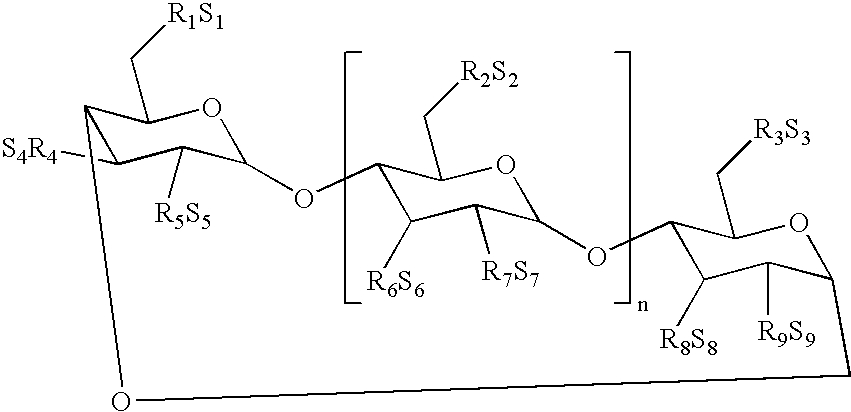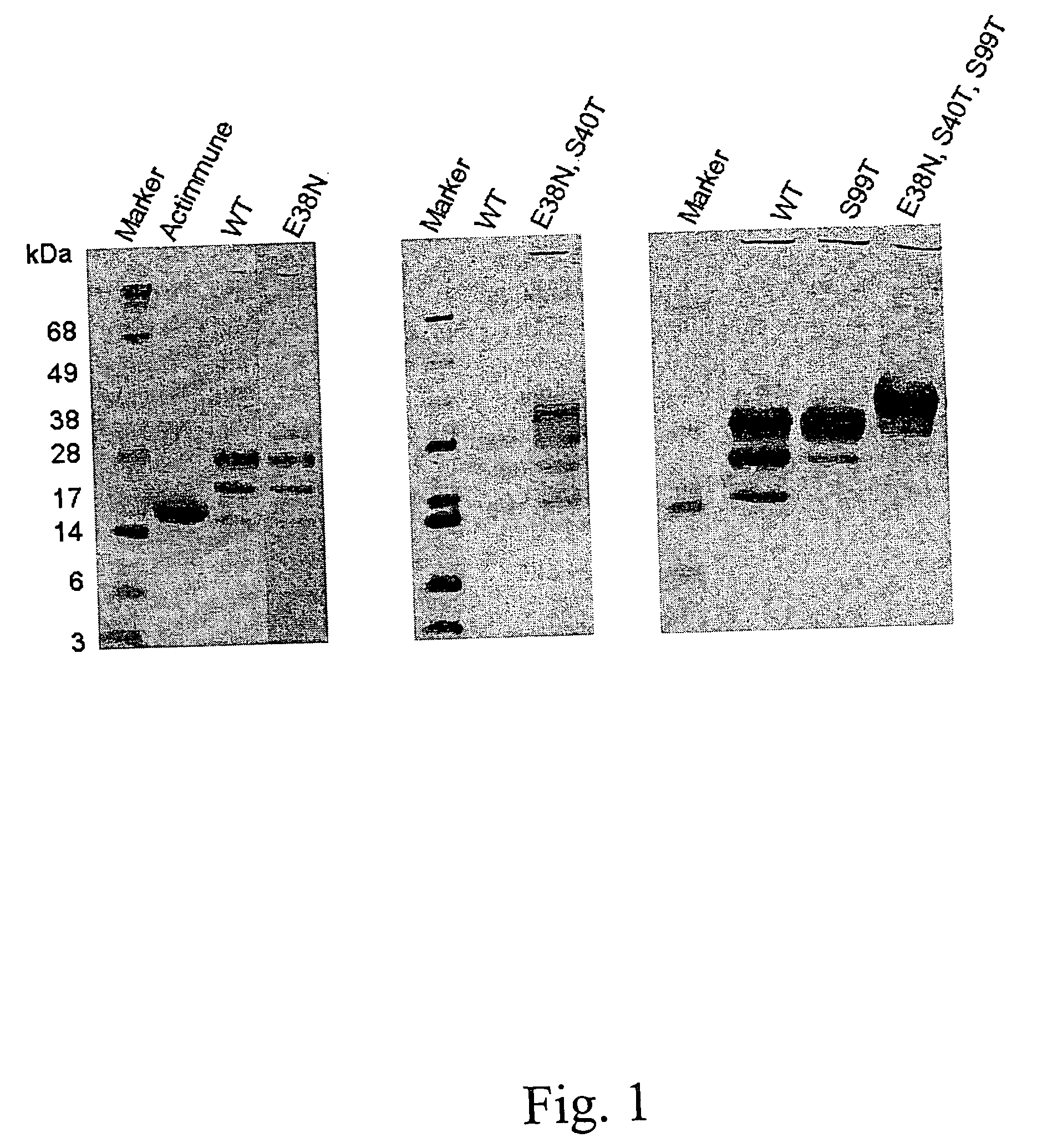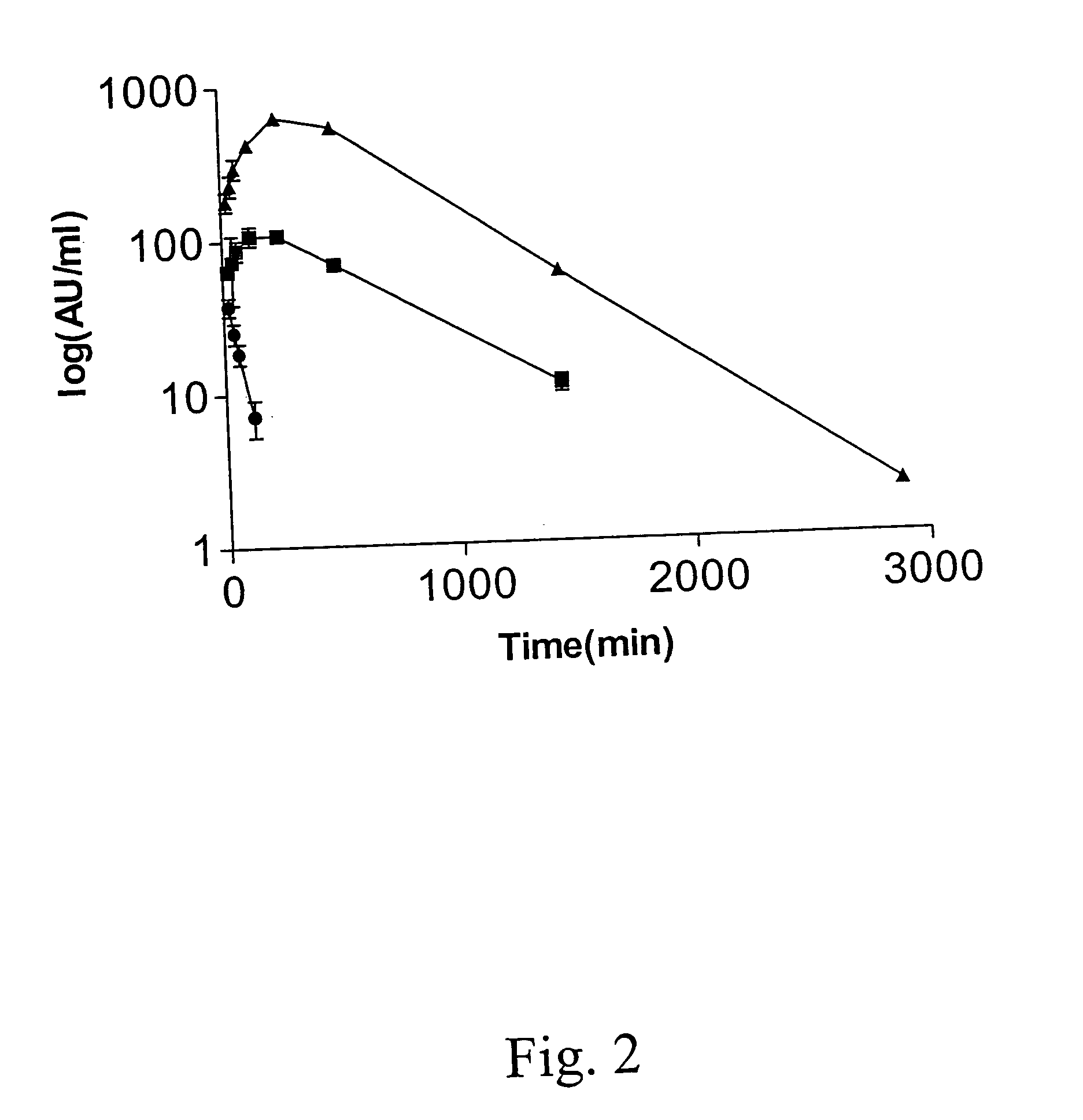Polynucleotides encoding interferon gamma peptide variants
a polypeptide and interferon technology, applied in the field of new interferon gamma polypeptide variants, can solve the problems of time-consuming and cumbersome purification, loss of valuable polypeptide material, and loss of c-terminal heterogeneity, and achieve the effect of reducing or avoiding c-terminal heterogeneity
- Summary
- Abstract
- Description
- Claims
- Application Information
AI Technical Summary
Benefits of technology
Problems solved by technology
Method used
Image
Examples
example 1
Determination of Surface-Exposed Amino Acid Residues
[0357] The X-ray structure used was of an IFNG homo-dimer in complex with two molecules of a soluble form of the IFNG receptor having a third molecule of the IFNG receptor in the structure not making interactions with the IFNG homodimer reported by Thiel et. al. Structure 8:927-936 (2000). The structure consists of the IFNG homodimer wherein the two molecules are labeled A and B. For construction purposes there is an additional methionine placed before the IFNG sequence labeled M0 and the sequence is C-terminally truancuted with ten residues (Q133 being the last residue in the constructed molecules). The M0 is removed from the structure in all the calculations of this example. The structure of the two IFNG monomers has very weak electron density after residue 120 and residues were only modeled until residue T126. Therefore, residues S121-T126 were removed from the structure prior to the calculations in this example. The two recept...
example 2
Determination of the Receptor Binding Site
[0365] Performing ASA calculations as described above results in the following residues of the IFNG molecule having reduced ASA in at least one of the monomers in the complex as compared to the calculation on the isolated dimer: Q1, D2, Y4, V5, E9, K12, G18, H19, S20, D21, V22, A23, D24, N25, G26, T27, L30, K34, K37, K108, H111, E112, I114, Q115, A118, E119.
example 3
Design of a Cassette for Expression of IFNG with Optimised Codon Usage
[0366] The DNA sequence, GenBank accession number X13274, encompassing a full-length cDNA encoding mature huIFNG with its native signal peptide, was modified in order to facilitate high expression in CHO cells. Codons of the huIFNG nucleotide sequence were modified by making a bias in the codon usage towards the codons frequently used in homo sapiens. Subsequently, certain nucleotides in the sequence were substituted with others in order to introduce recognition sites for DNA restriction endonucleases. Primers were designed such that the gene could be synthesised.
[0367] The primers were assembled to the synthetic gene by one-step PCR using the platinum Pfx-polymerase kit (Life Technologies) and standard three-step PCR cycling parameters. The assembled gene was amplified by PCR using the same conditions and the coding sequence is shown in SEQ ID NO:42. The synthesised gene was cloned into pcDNA3.1 / hygro (InVitrog...
PUM
| Property | Measurement | Unit |
|---|---|---|
| molecular weight | aaaaa | aaaaa |
| molecular weight | aaaaa | aaaaa |
| molecular weight | aaaaa | aaaaa |
Abstract
Description
Claims
Application Information
 Login to View More
Login to View More - R&D
- Intellectual Property
- Life Sciences
- Materials
- Tech Scout
- Unparalleled Data Quality
- Higher Quality Content
- 60% Fewer Hallucinations
Browse by: Latest US Patents, China's latest patents, Technical Efficacy Thesaurus, Application Domain, Technology Topic, Popular Technical Reports.
© 2025 PatSnap. All rights reserved.Legal|Privacy policy|Modern Slavery Act Transparency Statement|Sitemap|About US| Contact US: help@patsnap.com



